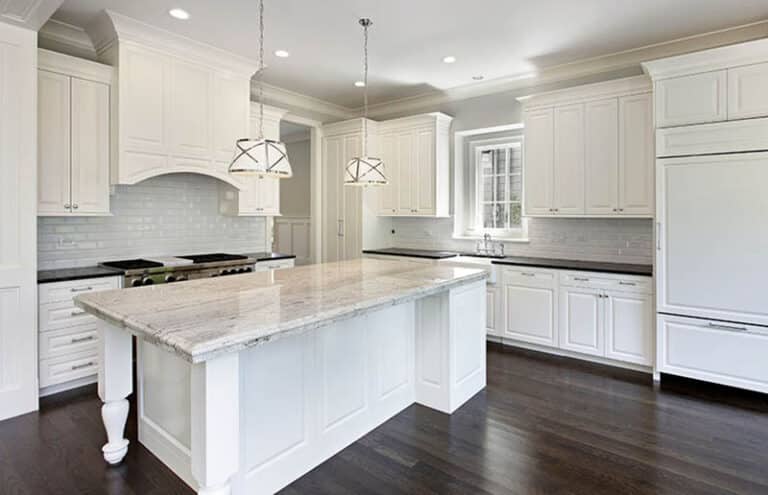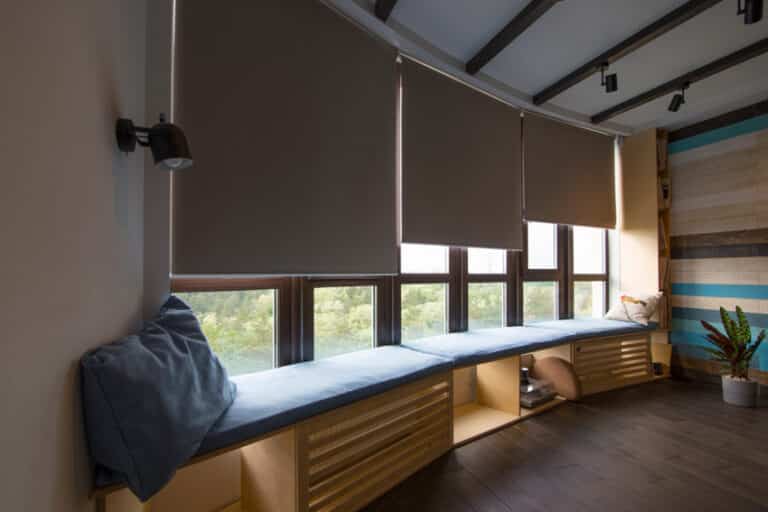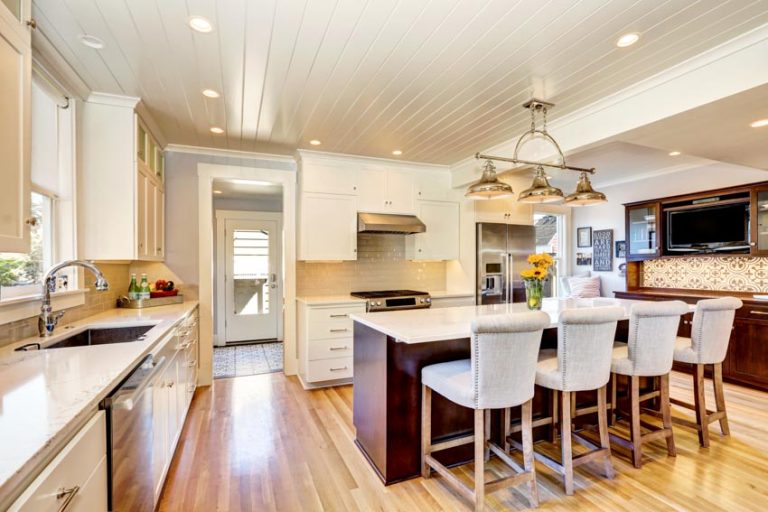Glazed Porcelain Tile (Types & Pros and Cons)
See the details of glazed porcelain tile, including what it is, the different types, uses, where to use them, and the pros and cons of glazed porcelain tiles.
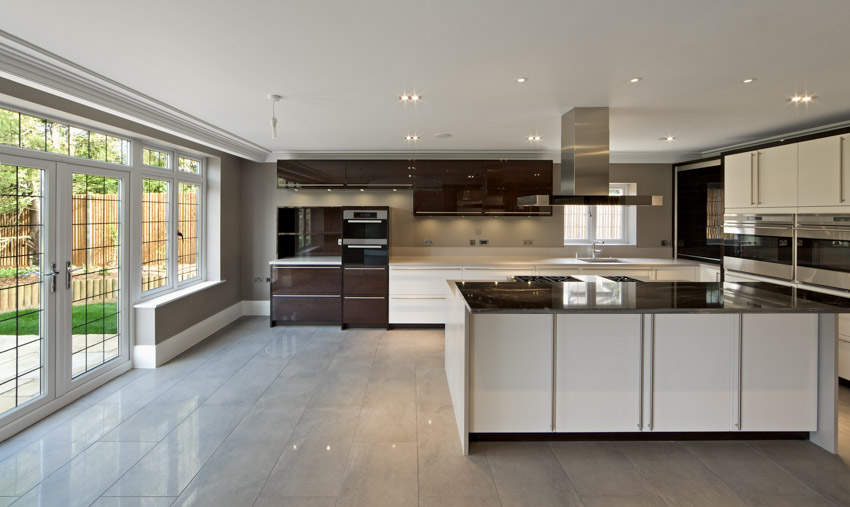
Glazed porcelain tiles are an excellent choice for residential purposes. They feature outstanding aesthetic and technical features, making them a solid standard for all residential usage, both floors and walls. This technology is frequently represented by character designs that are detailed and modern, with colors that are rich in expression.
These tiles are distinguished by elegant and unique hues with varying aesthetic impacts and significant stylistic diversity, resulting in refined living spaces. It is indeed a tile design that will never fail to amaze. Due to their longevity, these types of tiles can also be utilized outdoors, which helps in creating an eye-catching patio or backyard.
Additionally, having a very low water absorption rate, these tiles are as moisture-resistant as they are attractive. As you read on, you will come to learn everything there is to know about glazed porcelain.
What Are Glazed Porcelain Tiles?
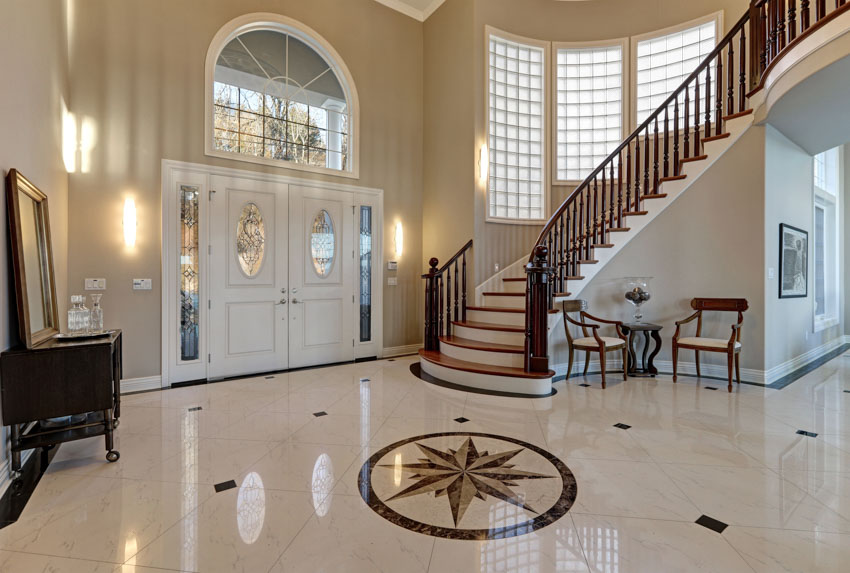
Moreover, these can be made by coating the tile with enamel. The glaze has a significant stylistic advantage since it allows for the production of a variety of more specific visual qualities that are not always feasible on other types of materials. As a result, certain collections are distinguished by a more intricate and refined look.
For millennia, people have always used this material for their flooring. These can be found in Nanjing, China’s 15th-century Porcelain Tower as well. Furthermore, various historical documents record the usage of these tiles in European countries throughout the 15th century.
Glazed porcelain tiles continue to be the flooring material of choice for many homeowners despite significant changes in production processes, textures, and designs over time.
Porcelain Glaze for Tiles
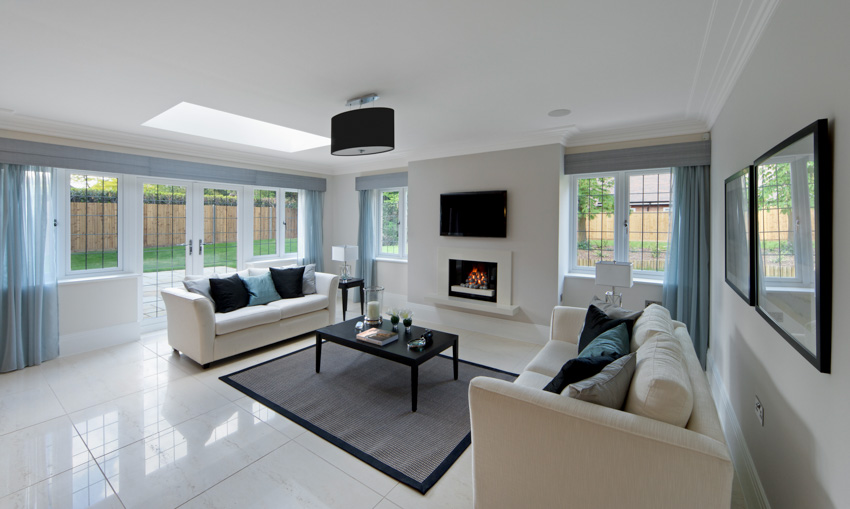
For instance, both unglazed porcelain and marble can have surfaces that are “shiny,” yet neither material is “glazed.” You can consider glaze to be similar to standard paint in that you can have matte paint for your walls as well as glossy paint for your skirting and doors. Glaze, simply put, is a type of paint for tiles.
Recent improvements in glazing technology have enabled inkjet printing devices to print digitized images of anything one can conceive onto porcelain tiles. Inkjet processors contain up to 1000 nozzles and can print in 6 different colors at a resolution of up to 1000 dpi.
The incredible versatility of this printing method is its most important characteristic. The integration of absolute image clarity and screen elimination produced a pixelated look.
It also has the capability to print to the tile’s edge and can imitate natural stone, wood, terrazzo, concrete, or any other graphic image.
Glazed Floor Tile Made of Porcelain
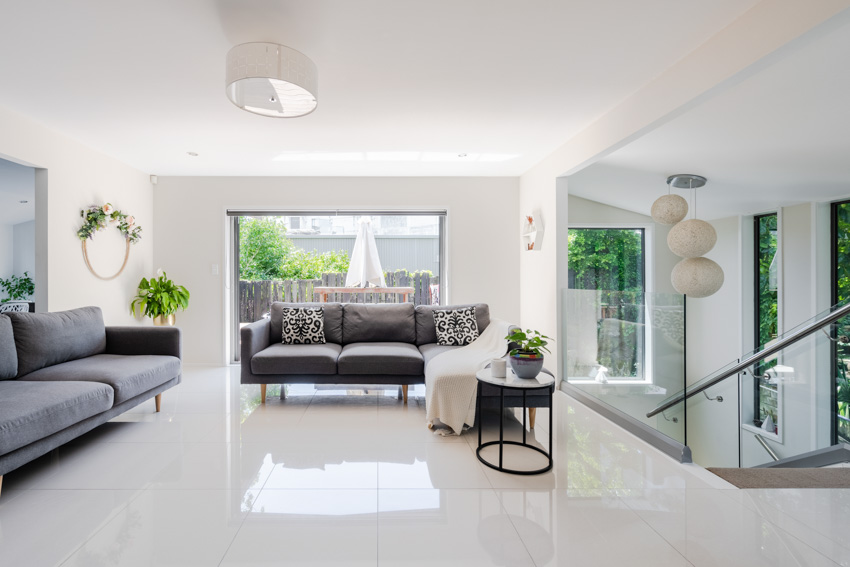
Glazed porcelain floor tiles go through a second fire procedure to protect them with a liquid glass covering. This protective layer makes the tile flooring slightly slick, but it also enables inkjet printing of a wide range of designs and patterns.
Furthermore, glazed porcelain floor tile is actually a widely used flooring option. Since there are so many design possibilities available in glazed porcelain tile, there is a complementing option for any home decor. They are preferred for flooring applications due to the tile’s smooth, non-porous finish, which makes cleaning a snap.
Glazed porcelain floor tiles are visually appealing and easy to maintain. Their natural luster will shine through even the dirtiest floors, and a quick mop will always restore them to their sparkling brilliance. They are more expensive than unglazed tiles, but once you see your stunningly smooth floors, your investment will be worth it in the end.
The commonly used wooden floors are particularly vulnerable to water and scratch damage. Fortunately, because glazed porcelain tile flooring is water- and scratch-resistant, they may be used in most types of rooms in a house, such as the foyer, kitchen, or bathrooms.
Glazed porcelain floor tile usually comes in four different glaze finishes glossy, matte, lappato, and textured. Lappato glazing tiles feature a brighter sheen than matte but a softer touch than glossy tiles. This delicate polishing method is named after the Italian term for “semi-polished” or “honed.”
Glazed Wood Look Porcelain Floor Tiling
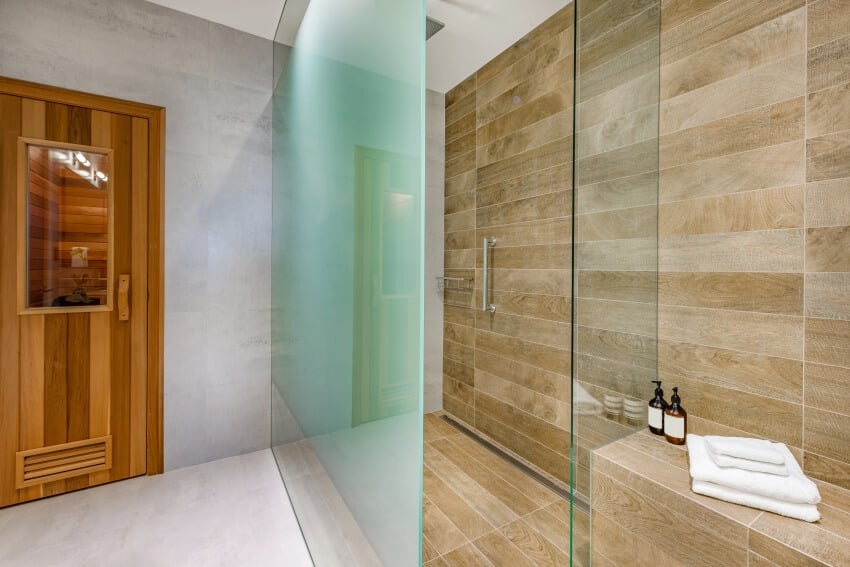
Glazed wood-look porcelain tile is among the greatest flooring options available at a reasonable cost. Tile that resembles genuine wood is a more cost-effective solution than classic wood flooring since it offers a cheaper price per square foot as well as some beneficial properties that make it very easy to maintain.
The advanced inkjet printing technique utilized in the manufacturing of porcelain tiles is also applied in the fabrication of glazed porcelain wood-look floor tiles. The appearance of hardwood is printed on the topmost layer of porcelain tiles with remarkable accuracy.
This is intended to make the tiles look to be made of actual wood. Sometimes, these tiles often have a slightly rough surface that accurately resembles wood grain and come in a range of styles.
Customers do have so many options to choose from when purchasing glazed porcelain tiles that mimic wood as they are manufactured and are available in a wide selection of hues, finishes, and patterns.
Several of the veneers that are obtainable are traditional oak, driftwood, and cherry, to mention a few. There is also a wide range of other high-quality types of wood veneer available on the market.
In addition, this less expensive and more water-resistant substitute to laminate flooring is suited for use in all sections of the house including damp environments, and it makes it easier to create a uniform wood look throughout a massive space.
Glazed Wall Tiles
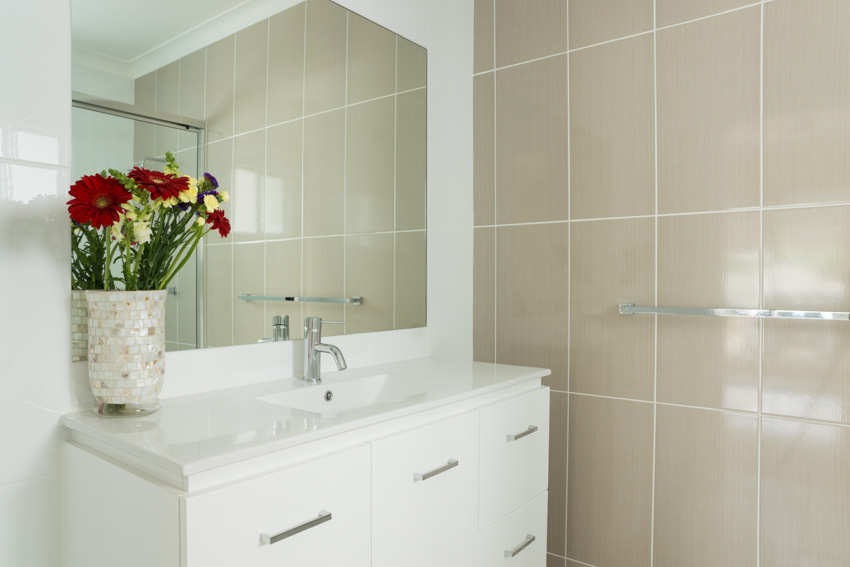
The popularity of glazed porcelain tiles for walls is still increasing, with both matte and glossy glazed tiles commonly used on walls. Another distinguishing characteristic of the advanced glazing technology is the amazing capability to print on non-flat surfaces.
Some examples include contoured or textured surfaces. This greatly expands the range of images that may be created and where the wall tiles can be installed and mimic natural wall materials like stone and brick.
Glazed Bathroom Porcelain Type Tiles
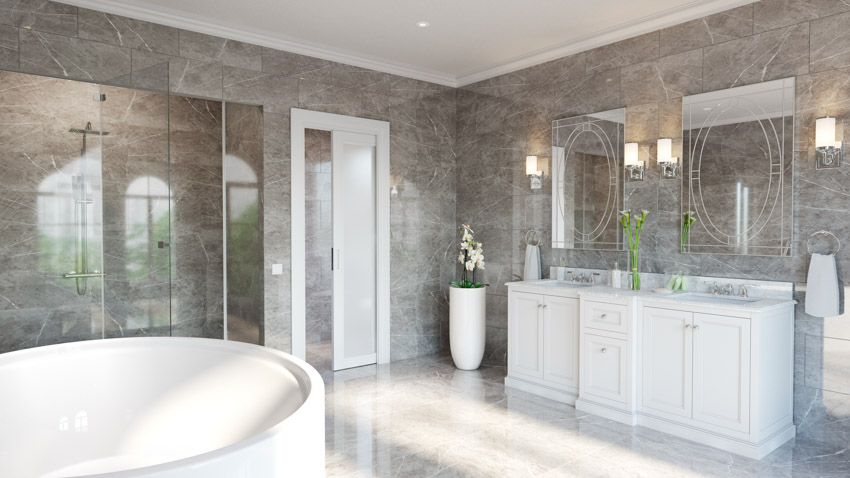
This will be beneficial when your bathroom tile flooring gets wet, the room gets humid after taking a bath or shower, and when scrubbing your bathroom walls or floors with detergent and water.
Glazed porcelain tile flooring is resilient and exceedingly unlikely to crack from normal wear and tear, unlike some forms of tile. And it is no wonder that glazed porcelain is a widely used material for bathroom flooring tiles, with expertly placed and treated tiles lasting more than 10 years.
Additionally, glazed porcelain tiles are simple to keep clean. In seconds, you can just wipe off or mop up drinks, dirt, as well as other dirty spots.
Bathrooms are especially prone to stains and spills, henceforth low-maintenance glazed porcelain types of floor tiles should be the main priority for busy homeowners who want to keep their bathroom looking great without the bother.
Glaze-Coated Porcelain Shower Tiles
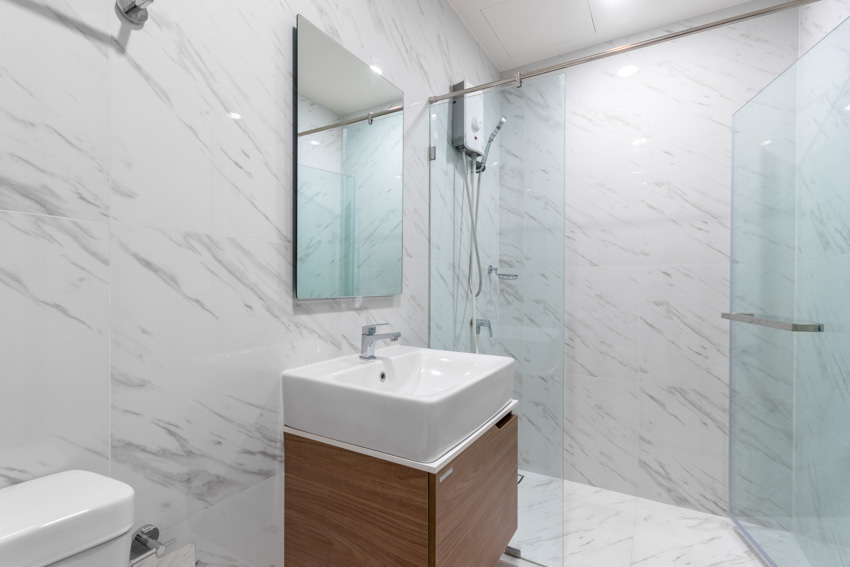
The tiles are also water-resistant, although this makes the shower floor slick. Water can penetrate the tile due to the pores within the tile. The porosity of the tiles determines how much water they absorb.
Nonetheless, if you are renovating the shower area, you can perform a gloss test on the glazed tile. The gloss test is performed by thoroughly washing the tile to see if the surface is seamless or moderately glossy. This will help you decide if the glazed porcelain tiles are slip-resistant for your shower tile floor.
Glazed-Covered Porcelain Kitchen Tiles
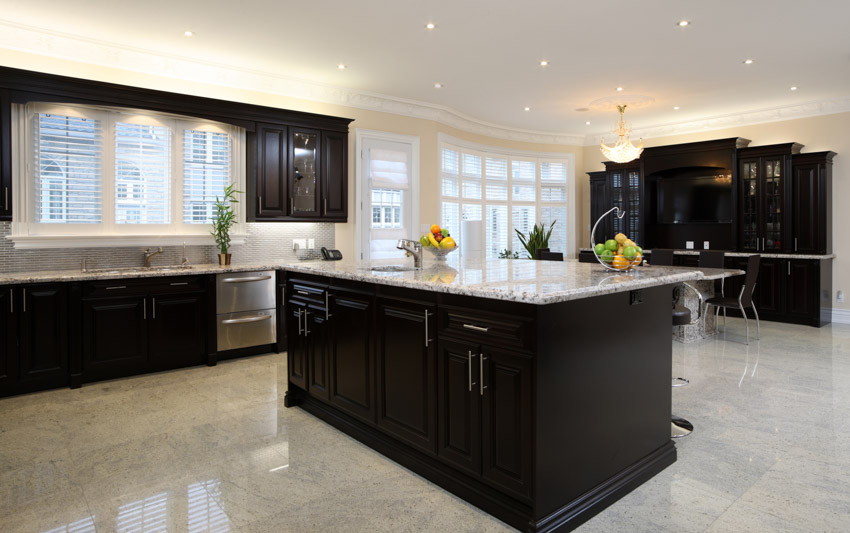
It is possible for glazed porcelain tiles to still retain some texture and not always display a high shine, making them acceptable for a variety of applications in the kitchen.
Ease of maintenance is very important for tiles that are placed in the kitchen. Porcelain tiles’ tougher and glazed surface helps make them easier to maintain over time. Glazed porcelain tiles require regular cleaning with a common cleanser.
Regular use of hard cleaners will aid in the removal of hard stains as well as the restoration of the glazed porcelain tiles’ original appearance.
Porcelain Mosaic Tiles with Glaze
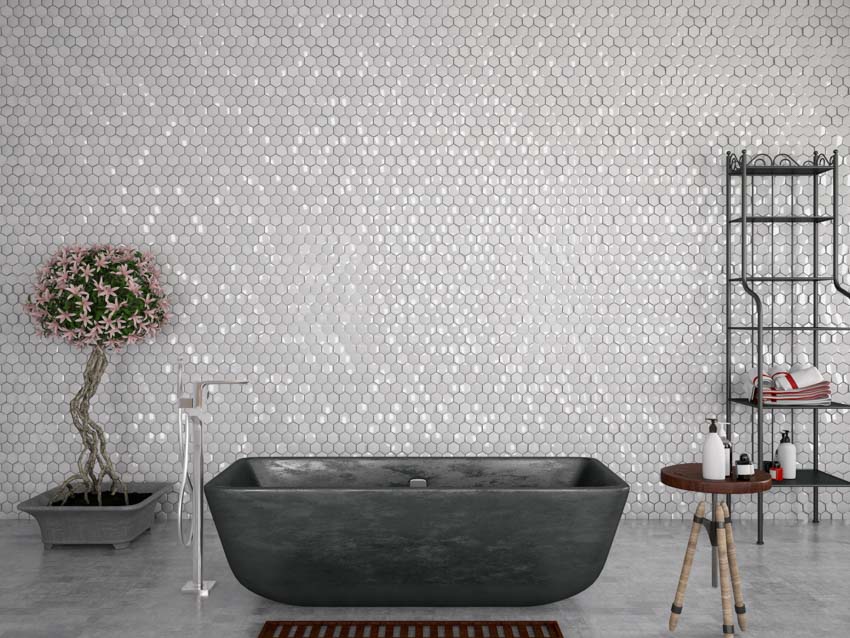
The mosaic is glazed to a gleaming sheen and protected to retain its luster. Hence, the mosaic tile pattern is brilliant, glossy, uniform, and rich in depth. See pictures of mosaic tile for shower walls here.
Porcelain Subway Tiles Coated with Glaze
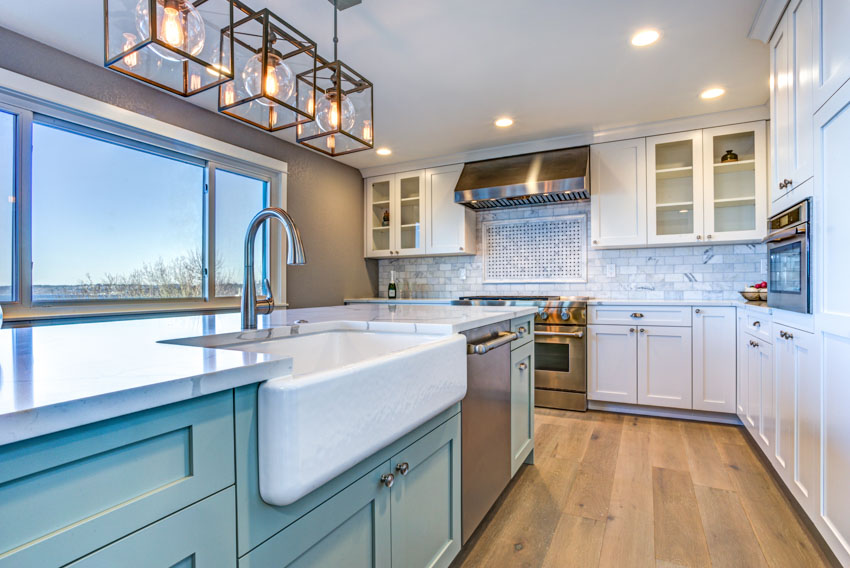
Subway tile is normally a rectangular, solid, low-fired, glazed porcelain tile that is generally 3″ by 6″, although it is available in a range of sizes for household use. Glazed porcelain subway tile is a thin yet durable wall or floor material that is popular in kitchens.
Tiles with Glaze Coating Pros and Cons
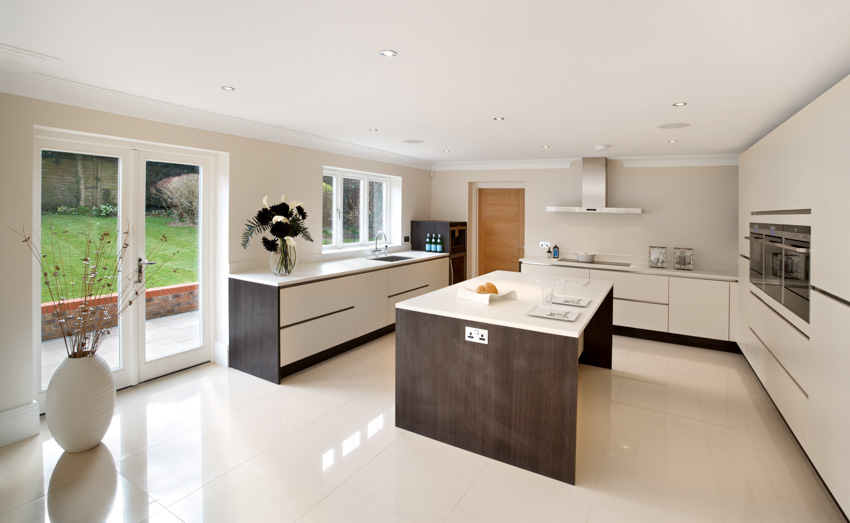
Pros of Porcelain Glaze Tiles
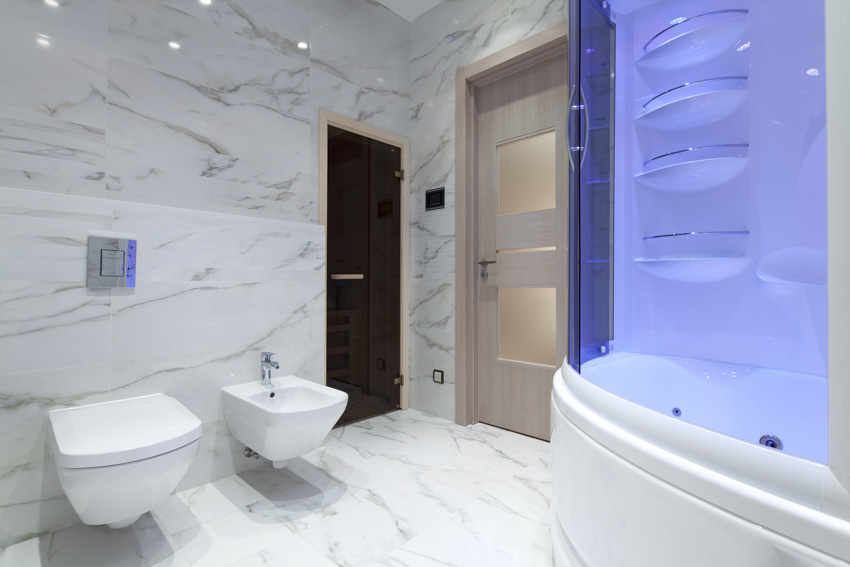
Since they are extremely water-resistant, they are ideal for use in bathrooms, cellars, as well as other moist areas. Porcelain kitchen countertop slabs can hold up to the daily wear and tear of a busy kitchen space and mimic the look of real marble.
Very Stain-Resistant: Glazed porcelain tile is also impervious to stains. When stains develop on the surface, they penetrate through and solidify, making them tough to remove.
Because porcelain tiles are solid, they are highly resistant to most contaminants, and stains are not given the likelihood to seep down and settle. Since spilled wine, coffee, and other liquids wipe right up, glazed porcelain tile serves as one of the greatest tile flooring solutions for kitchen use.
Easy to Clean: This tile is also ideal for pet parents since it is very easy to clean whenever there is mud, spills, and other dirt that might otherwise be an issue. It is also the ideal tile flooring solution for a floor that can withstand stains effectively, even in the long run.
High Durability: Precise manufacturing procedures contribute to the durability of glazed porcelain tile, reducing cracking and other problems. It is a wonderful option if you intend to employ tile in a business setting or in a high-traffic area. When it comes to durability, glazed porcelain tile is just more reliable over time.
Long Life Expectancy: This type of tile can be hard to break and is extremely durable, making it challenging to scratch or damage. It is a nice and reliable option to take into account when searching for the best in the newest tile trends.
Minimal Maintenance: These tiles are easy to maintain due to their excellent reliability. Simply washing them and cleaning the grout in between will keep them in good condition for years or even decades. Even if they become broken or damaged, they will still appear good because they have a consistent color throughout.
Beautiful Look: There are a tremendous number of glazed tile options to choose from that look stunning. You can find a tile to match practically any type of material available. There are porcelain tiles that look like marble and other natural stones to fit your design needs.
Cons of Porcelain Stain Resistant Tiles
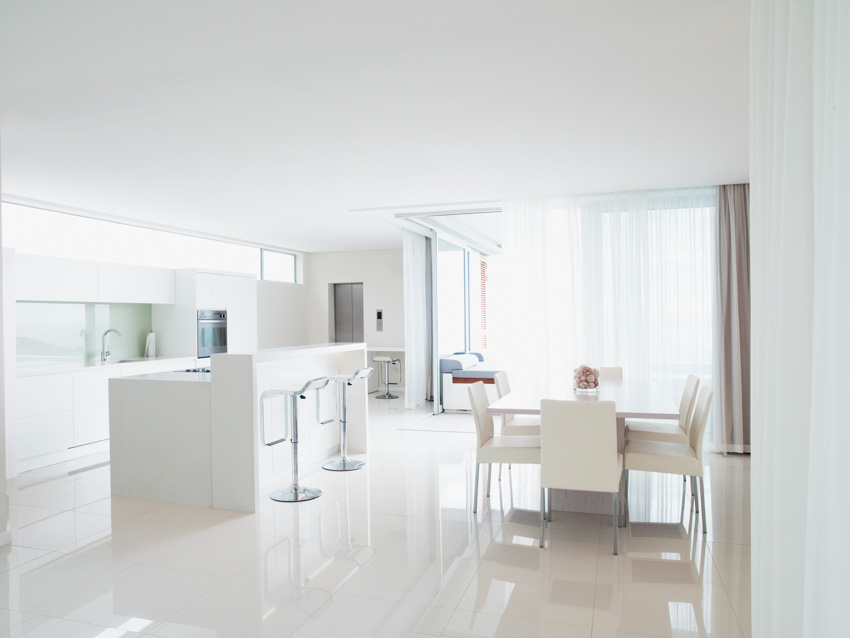
Builders are less keen on laying glazed tiles as they foresee a more complex process. If you opt to have these tiles installed, you must anticipate paying a bit more for expert installation.
Moderately Heavy: One of the most significant benefits of these tiles is their great density and toughness.
Nevertheless, if you are concerned about the weight, they can be a drawback. This is due to the denser tile being slightly heavier than ceramic tile and considerably heavier than traditional flooring options such as wood.
Is Porcelain Glazed Flooring Tile Durable?
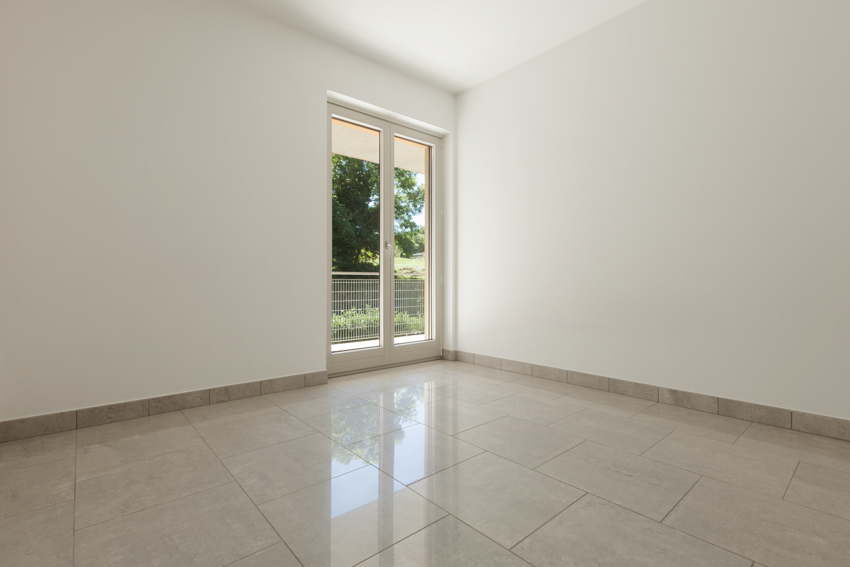
Glazed porcelain backsplash is one of the most popular kitchen options due to its well-known strength. Due to its durability, glazed tiles can even be applied outside, supporting you in creating the ultimate patio and dependable outdoor space.
Are Porcelain Floor Tiles Slip Resistant?

However, despite their usually glossy finish, modern glazed tiles are no more prone to slip on than other matte-finished tiles. Water will surely make them more slippery, but you have to remember that this can also be applied to any type of floor. If you really want to go all out, you can even install it in your shower area.
In a nutshell, this type of tiling is slippery when wet, but the same goes for other tiles. Nonetheless, to increase slip resistance, you can look out for the textured variety.
Porcelain Glaze Repair
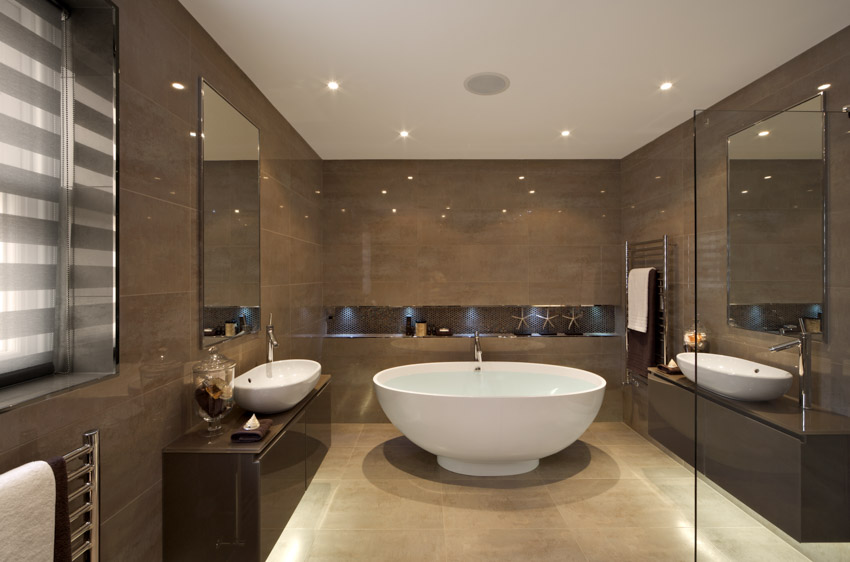
• A tile refinishing kit can be purchased at a local home construction store: Tailor the kit to your tile’s kind and finish.
Certain kits, for instance, specialize in matte, glossy, or speckled finishes. To restore the sheen to the tile glaze, you can use a kit that matches your current tile finish.
• Wipe down the surface with a non-abrasive cleaner: Finely gritted sandpaper can be used to remove any residual paint or caked-on impurities.
Remove mildew with water and bleach. Eliminate any metal elements in the workspace, like drains, or protect their edges with masking tape. Clean the tile with a pad and completely rinse it. Allow it to fully dry.
• Stir each of the kit’s supplied solutions: Both the activator and the base should be included in the package. Add them together using the ratio recommended by the manufacturer. Combine them in a clean, empty can or the receptacle that came with your kit.
• Apply the compound: Use a fine-bristle varnishing brush, which is normally supplied with the kit, to distribute the compound to the surface. Brush in a single direction carefully to create a uniform glaze.
Depending on the condition of the glazing, apply as many as four applications. Allow roughly an hour between coatings.
Give it at least 48 hours for the refinishing product to cure or as directed by the manufacturer. Once the refinishing solution has dried, clean your tile using a non-abrasive cleaner like a cloth or microfiber towel.
Can You Seal Glaze Covered Porcelain Tile?
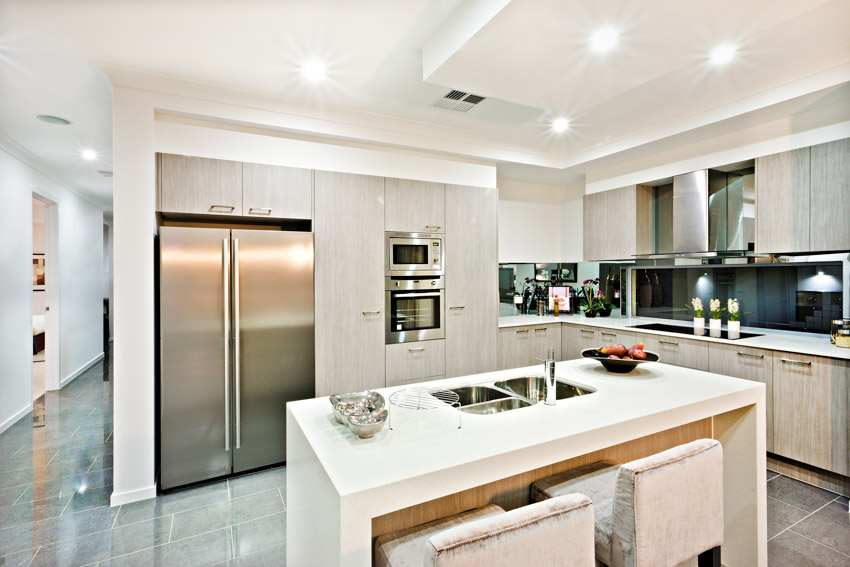
How to Clean Glazed Tiles

Red wine and coffee stains can be cleaned with baking soda as well as water paste. Combine the two, administer to the stain, and scrub gently with a little soft bristle brush, such as an old toothbrush, until the stain is removed. Afterward, rinse with warm water and repeat as needed.
After you have cleaned any unwanted stains or blemishes, you can start mopping the whole floor. You can use the white vinegar and water mixture you previously made.
Vinegar is great for bringing out the shine of the tiling with glaze. After mopping, you can begin rinsing the floor with clean water once more. Wipe the tile dry using a microfiber cloth to eliminate staining and water penetration into the grout.
Can Glazed-Sheathed Porcelain Be Used Outdoors?
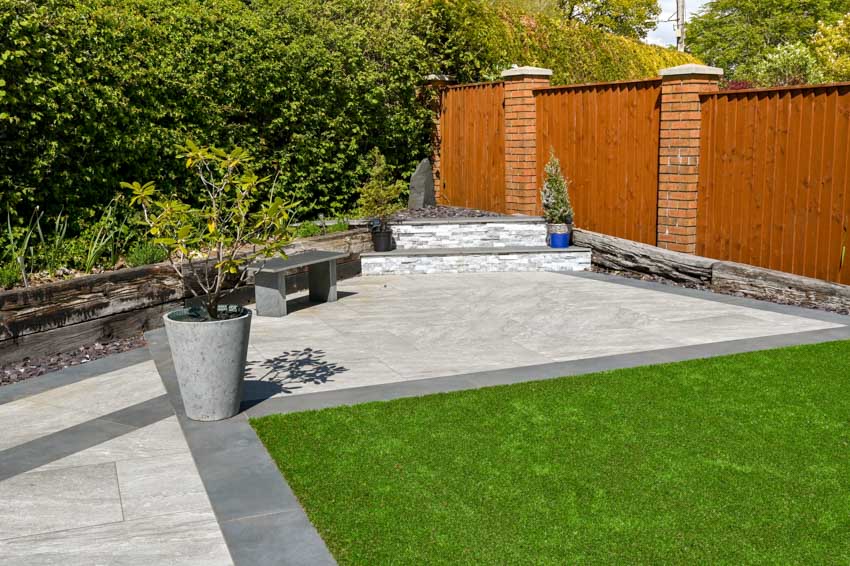
Nevertheless, these materials may necessitate frequent cleaning and sealing and may appear outdated. Outdoor porcelain tile with glaze is an excellent, long-lasting, and contemporary-looking alternative to standard paving products.
Glazed Vs Unglazed Porcelain-Made Tiles
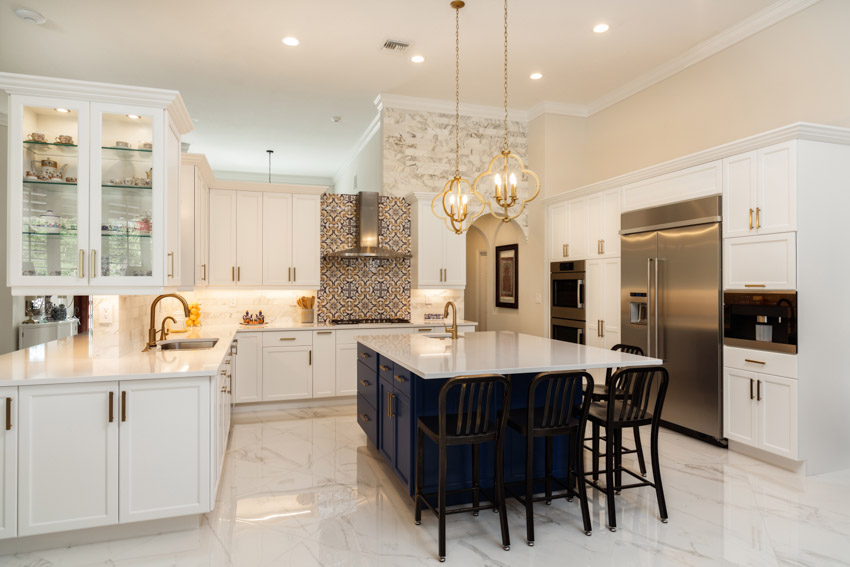
• Due to their smooth and usually glossy finish, glazed tile flooring is commonly utilized in residential structures. On the other hand, unglazed ones are commonly used outdoors, in commercial establishments, and in damp places due to their slip-resistant and natural feel. However, glazed-type ones can also be used outdoors.
• Glazed-type tiling is infrequently stained because of the non-porous and scratch-resistant finish provided by their liquid coating. However, due to their natural surface, unglazed porcelain flooring can readily become stained even after their scratch-resistance treatment.
• These are less thick and thinner than the unglazed variety.
• Glazed-type tiling comes in a wide range of designs and prints, featuring digital prints created with inkjet printing innovation. In contrast, unglazed ones have a more natural, rustic, and earthy appearance.
• The entire body of glazed-type tiling cannot be made of porcelain; it must also incorporate additional materials to make it more durable and more reliable, whereas the entire body of unglazed ones is made of porcelain to provide them with a uniform appearance.
Glazed Vs Matte Tiles

The light reflection widens out the area and fools the eye into thinking the room is broader and more open than it is. These are a wonderful design alternative for smaller and tighter bathrooms and corridors.
Moreover, the tiling with glaze is ideal for making a room feel brighter and warmer. These improve natural light in rooms with limited natural light by enhancing illumination. This is an excellent choice for small rooms.
The smooth quality of these surfaces makes them extremely easy to keep clean and maintain, requiring only a simple washdown to shine. This is just among the numerous reasons why these materials are ideal for use in busy areas such as kitchen floors and shower walls.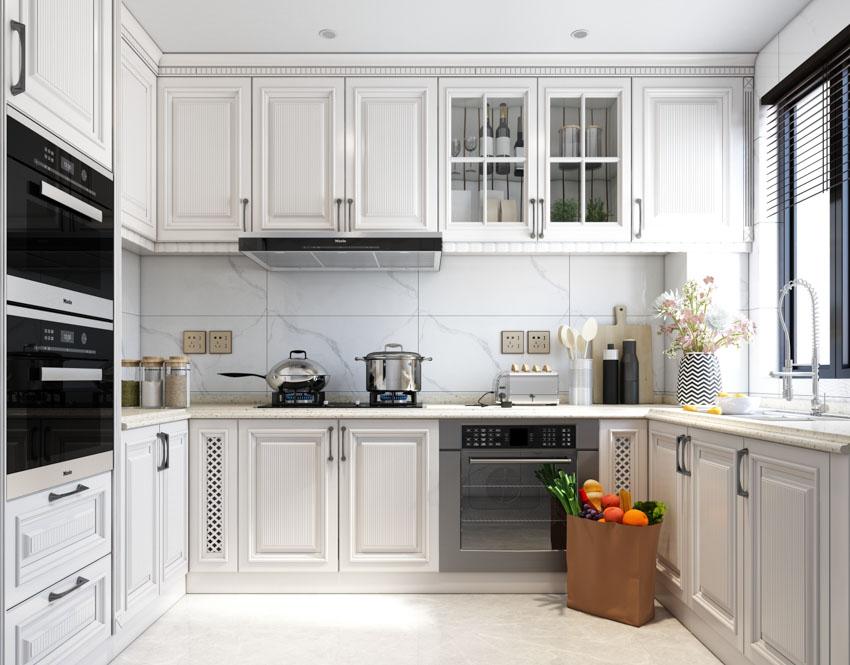
Matte tiles, on the other hand, offer stronger traction than glaze-type ones despite their lack of a bright and dazzling appearance.
These have a better non-slip popularity in high-traffic areas that are frequently in direct contact with moisture and steam. These will improve areas such as corridors, kitchens, and bathrooms.
Matte tiling can disguise smudges, stains, and dried water drips effectively. Matte tiling does not need to be cleaned as frequently, and you do not have to be as concerned about water and detergent markings.
Can You Add Glaze Coating on Porcelain Tiling?
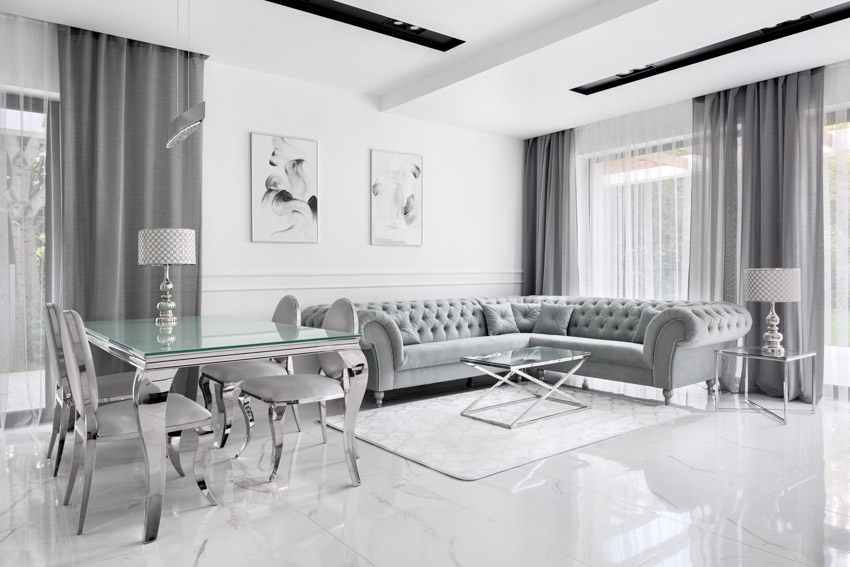
See more related content in our article about the different types of flooring materials for interior design on this page.


